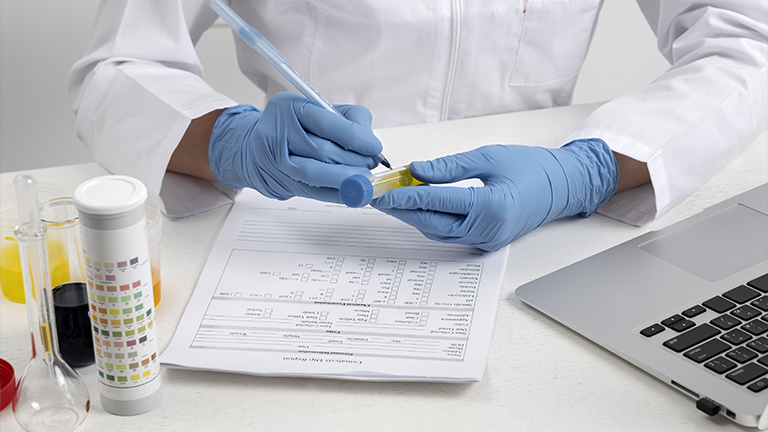Estrogen plays a vital role in reproductive health, bone strength, cardiovascular function, and overall hormonal balance. When hormone-related health issues arise, doctors often recommend an estrogen test to measure estrogen levels in the body. This test helps in diagnosing hormonal imbalances, fertility concerns, menopausal changes, and even certain health conditions in both women and men.
In this guide, we’ll cover the purpose, procedure, types, normal ranges, and interpretation of estrogen test results, along with costs and availability in the USA, UK, and Canada.
What is an Estrogen Test?
An estrogen test is a type of estrogen blood test that measures the amount of estrogen hormones in the bloodstream. Estrogen is a group of hormones that includes estradiol, estrone, and estriol, each playing unique roles in the body.
Why Estrogen is Important for Health
- In women: Regulates menstrual cycles, fertility, pregnancy, and bone health.
- In men: Helps balance testosterone, supports bone density, and impacts sexual health.
- In children: Plays a role in puberty and physical development.
Who Should Consider an Estrogen Test
Doctors may recommend an estrogen hormone test if you experience:
- Irregular or absent periods
- Fertility issues
- Symptoms of menopause
- Early or delayed puberty in children
- Signs of hormonal imbalance such as hot flashes, fatigue, or mood swings
- Breast development in men (gynecomastia)
Types of Estrogen Tests
There are three primary types of estrogen test, depending on which hormone is being measured.
Estradiol (E2) Test
- The most common estradiol test
- Measures the strongest type of estrogen
- Important for assessing fertility, menstrual health, and menopausal status
Estrone (E1) Test
- Predominant after menopause
- Useful in evaluating estrogen imbalance symptoms in older women
Estriol (E3) Test
- Mainly produced during pregnancy
- A key estrogen test during pregnancy to monitor fetal development
Why an Estrogen Test is Done
Estrogen testing can provide insights into several health conditions.
For Women
- Fertility evaluation
- Diagnosing polycystic ovary syndrome (PCOS)
- Assessing menopausal changes
- Monitoring hormone replacement therapy
For Men
- Detecting low testosterone symptoms
- Diagnosing gynecomastia (breast tissue growth)
- Identifying hormonal imbalance
During Pregnancy
- Monitoring fetal development
- Detecting risks of complications such as Down syndrome or other genetic disorders
- Checking placental health
How the Estrogen Test is Performed
Blood Test Procedure
- A small blood sample is taken, usually from a vein in the arm.
- The test is quick, often completed in under five minutes.
- Results are typically available within a few days.
Preparation Before the Test
- Your doctor may ask you to avoid certain medications like birth control pills or hormone therapy.
- Fasting is usually not required, but follow your doctor’s instructions.
- Best performed at specific times in the menstrual cycle for accurate results.
Normal Estrogen Levels
Estrogen levels vary depending on age, sex, menstrual cycle phase, and pregnancy status.
1 Normal Estrogen Levels in Women (Estradiol/E2)
- Premenopausal: 15 – 350 pg/mL
- Mid-cycle peak: Up to 750 pg/mL
- Postmenopausal: < 10 – 50 pg/mL
2 Normal Estrogen Levels in Men
- 10 – 50 pg/mL (estradiol)
- Maintaining balance with testosterone is crucial.
3 Normal Estrogen Levels in Children
- Pre-puberty: Typically < 20 pg/mL
- Levels increase during puberty.
(Note: Ranges may slightly vary across labs in the USA, UK, and Canada.)
Abnormal Results & What They Mean
Causes of Low Estrogen
- Menopause
- Primary ovarian insufficiency
- Excessive exercise or low body fat
- Pituitary gland disorders
Causes of High Estrogen
- Certain tumors (ovarian, testicular, adrenal)
- Obesity
- Hormone therapy side effects
- Liver disease
Health Conditions Related to Abnormal Estrogen Levels
- Infertility
- Osteoporosis
- Breast or endometrial cancer risk
- Mood disorders and depression
Risks and Limitations of the Test
- Risks: Minimal, may include mild bruising or dizziness after blood draw.
- Limitations: Levels can fluctuate daily; one test may not provide the complete picture. Often combined with other hormone tests (like progesterone, FSH, LH) for accurate diagnosis.
Estrogen Test Cost and Availability
- United States: $50 – $150 (may vary with insurance coverage)
- United Kingdom (NHS): Often free if medically necessary, private clinics may charge £70 – £120
- Canada: Covered under provincial healthcare in many cases; private labs may cost CAD $80 – $130
Availability is widespread in hospitals, diagnostic labs, and fertility clinics.
Final Thoughts on Estrogen Testing
An estrogen test is an important diagnostic tool for assessing hormonal balance, fertility, menopausal health, and pregnancy monitoring. Whether you are a woman dealing with irregular cycles, a man experiencing low testosterone symptoms, or someone concerned about hormonal imbalance, this test provides valuable insights into your overall health.
Understanding your results with the guidance of a healthcare provider ensures proper treatment and lifestyle adjustments for optimal well-being.


